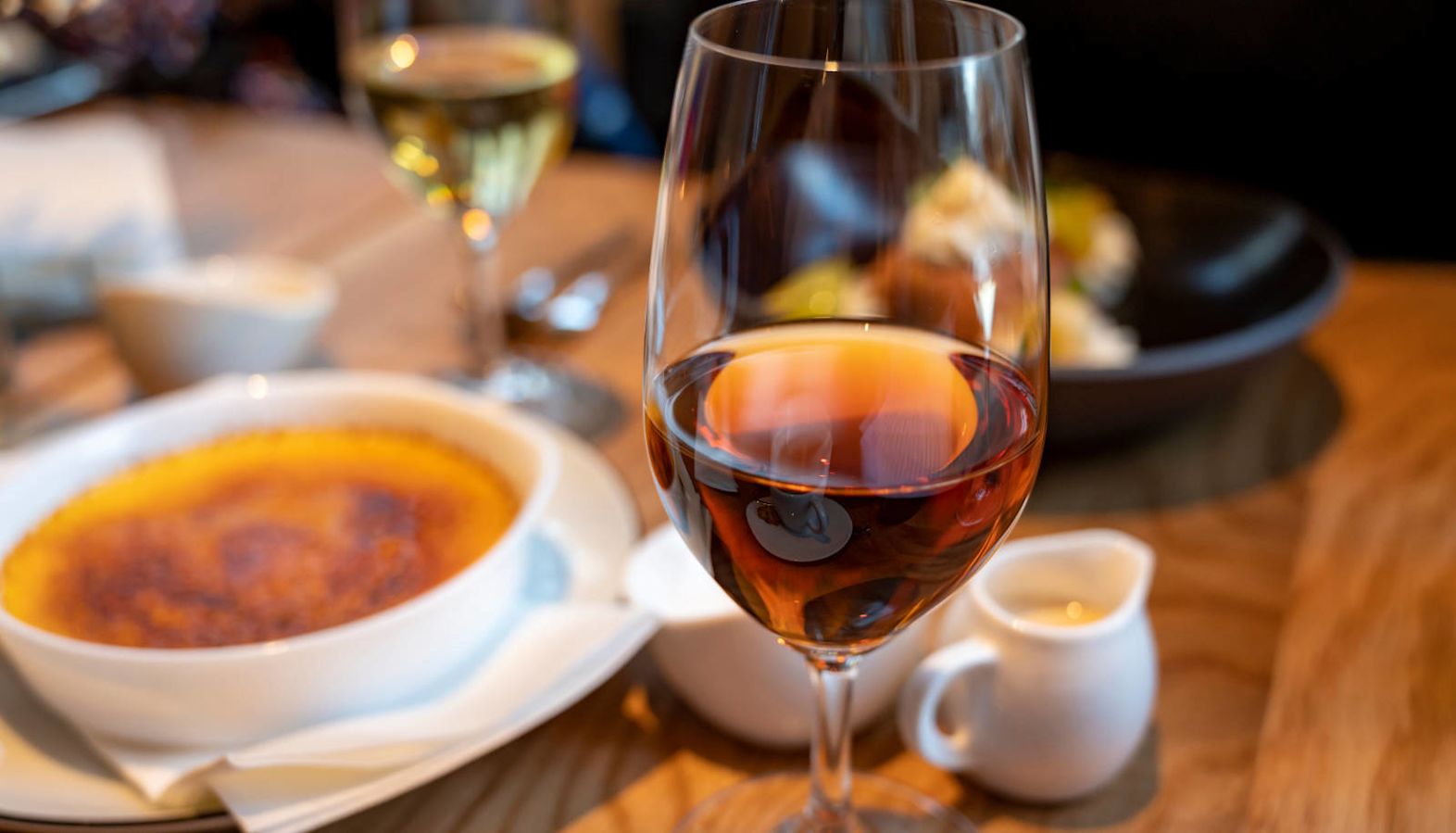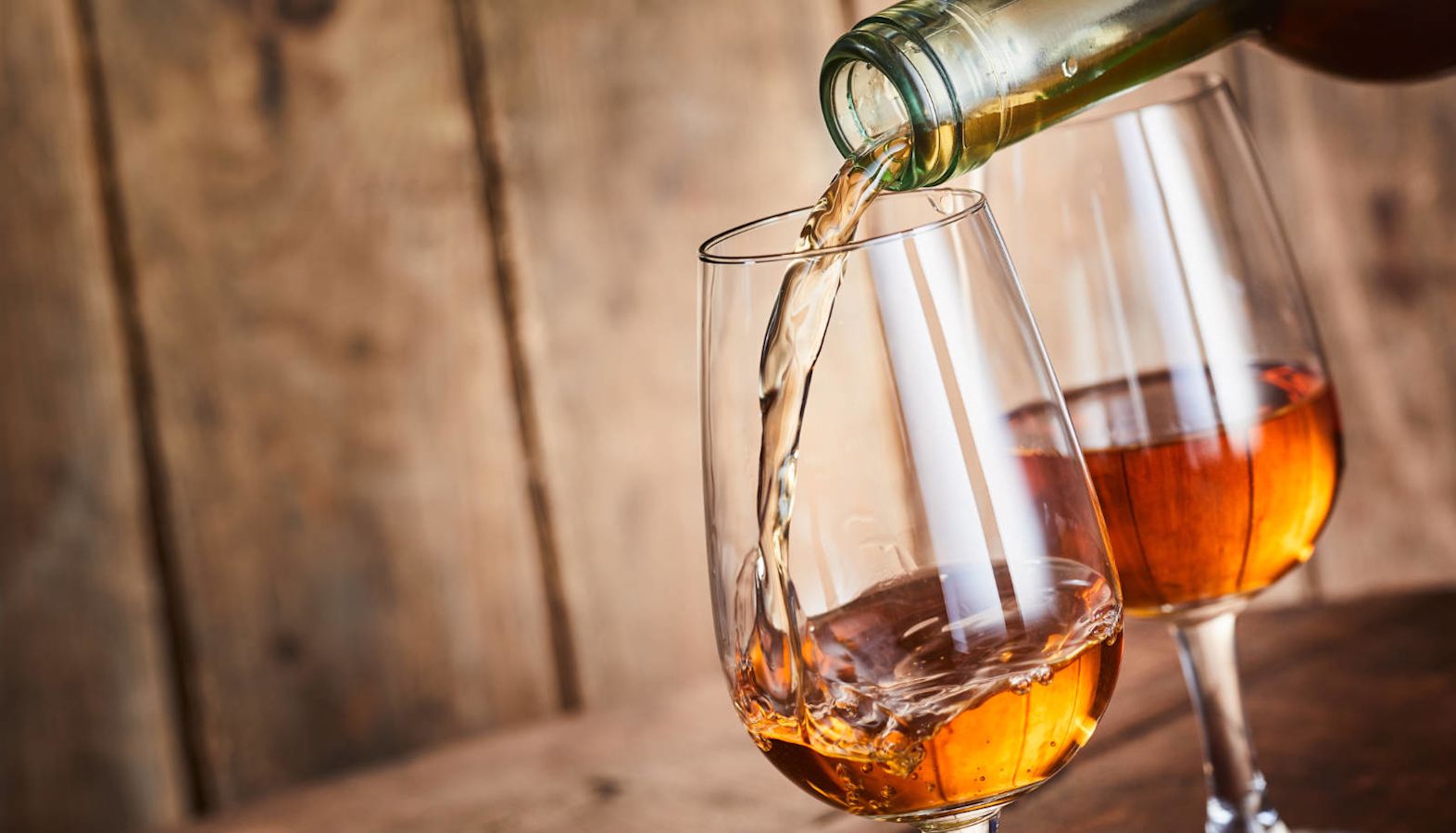Live chat
When was the last time you poured yourself a glass of sherry? This Spanish fortified wine has had its fair share of ups and downs with UK drinkers. Its reputation was somewhat tarnished by the cream sherries and cooking sherries that were once ubiquitous in UK drinks cabinets. These overly sweet and often inferior-quality wines bore little resemblance to sherry’s authentic, complex character. This resulted in the widespread perception that sherry was a less-than-sophisticated choice, best resigned to dusty cupboards and left for trifle recipes.
In recent years, the UK has seen a sherry renaissance, with increasingly more wine lovers discovering that sherry is not a single, homogeneous style of wine but encompasses a whole range – from the crisp, bone-dry Manzanilla and Fino sherries, to the intriguingly complex Amontillado, Palo Cortado and Oloroso, and even the wonderfully rich and sweet Pedro Ximénez and Moscatel.
Where does sherry come from?
With a history spanning centuries, sherry originates in Jerez, southern Spain. Under Spanish law, only fortified wines produced in the ‘Sherry Triangle’ can be labelled as sherry. This area in the province of Cádiz is framed by three towns: Jerez de la Frontera, Sanlúcar de Barrameda and El Puerto de Santa María.
Jerez de la Frontera is the source of the name of the wine itself, as Jerez translates to ‘sherish’ in Arabic, which was anglicised by the British to ‘sherry’.
Within this unique geographic triangle, the specific climate and chalky soil known as ‘albariza’, play a key role in cultivating the three primary grape varieties used in sherry production – Palomino, Pedro Ximénez and Moscatel.
As you might imagine for a region so close to the coast and easy pickings for invaders, the history of sherry’s production in Jerez is steeped in many cultural influences. The Phoenicians first introduced winemaking to the area, a practice continued by the Romans. During the Moorish reign, the process of fortifying wine started to take root.
Sir Francis Drake introduced sherry to Queen Elizabeth I’s court in the 16th century when it became fashionable. The British love of sherry continued through the centuries, with many British merchants setting up businesses in the region.
The sherry industry has continued to thrive, despite it falling out of fashion in the UK at the end of the 20th century, still making its amazing and totally unique fortified wines using the age-old traditional methods, sometimes assisted by a little modern technology.

How sherry wine is made
A distinctive process steeped in tradition, sherry production requires careful grape selection, specialised fermentation and a unique maturation method known as the Solera System. The journey from vine to bottle involves time-honoured practices and careful craftsmanship. Here’s how it’s done:
Grape selection
Most sherry wines are made with the Palomino grape. Its high acidity and neutral profile make it the perfect canvas for the wine’s unique ageing process and the intricate flavours this imparts. Moscatel and Pedro Ximénez grapes are used for the sweet varieties of sherry.
Fermentation
Once harvested, the grapes are pressed, and the juice is fermented often in stainless steel vats, although traditional winemakers prefer to ferment the wine in old wooden casks for the extra character it gives.
Fortification
The result is a base wine which is then fortified with grape spirit. If destined to become a Fino or Manzanilla, it’s fortified to about 15% alcohol, creating conditions for the growth of ‘flor’, a white layer of indigenous yeast that protects the wine from oxidation and imparts unique flavours. For Oloroso sherries, the wine is fortified to about 17-18% alcohol, which prevents ‘flor’ growth and leads to oxidative ageing.
Ageing – the Solera System
Sherry’s distinctive character is largely a result of the Solera System, a unique ageing process involving fractional blending in a series of barrels arranged in tiers. The higher tiers are called ‘criaderas’ and hold the younger wines, while the oldest wines are stored in the bottom row of barrels, known as the ‘solera’.
When sherry is extracted for bottling, it’s drawn only from the oldest casks. These casks are then replenished with wine from the next oldest tier, and so on, with the top tier filled with the new wine. This continuous blending process ensures consistency in flavour and style, with no single vintage dominating the blend.
Seven types of sherry to explore
Sherry is a unique wine that comes in seven different styles. Why not get to know them all?
Fino is the epitome of dry sherry. It’s aged under a layer of yeast, known as ‘flor’, to protect it from oxidisation, uniquely in inland cellars. This results in a very dry, pale wine with a yeasty and nutty profile. It pairs beautifully with tapas, seafood and cured ham. Try Delicado Fino sherry – a crisp, complex Fino.
Manzanilla is a fino style exclusively produced in the seaside town of Sanlúcar de Barrameda. Like a Fino, it’s aged under a layer of flor, giving the wine a fresh, tangy and seabreeze-fresh taste. This light, dry sherry is reminiscent of salty ocean spray and carries a floral chamomile tone, which makes it an excellent partner for seafood, olives and almonds. As it’s a dry, delicate wine, it’s best enjoyed within a day or two of opening.

Amontillado begins life as a Fino, spending several years in the solera system before being fortified to a higher alcohol content, which kills the flor. The wine then goes through controlled oxidation, giving Amontillado its unique amber colour and complex notes of roasted nuts, tobacco and dried fruit along with its original tangy qualities. It pairs brilliantly with a fricassee of wild mushrooms, richly sauced chicken, aged cheese like Manchego or reserve Comte or classic jamón Ibérico. Try Delicado Amontillado sherry.
Oloroso is aged oxidatively without flor for a longer period than Amontillados. This results in a full-bodied, dark, complex wine with intense dried fruit, caramel and roasted nut flavours. Naturally dry, Olorosos may occasionally be sweetened with a little Pedro Ximénez for balance. Oloroso is perfect with red meats, game and aged cheese.
Palo Cortado is a rare sherry as it can’t be deliberately made. It starts its life under flor just like a Fino; however, if the flor starts to fade, the sherry naturally begins to evolve like an Oloroso. The end product is a fabulous, elegant sherry, so not too heavy, with amazing layers of rich, complex flavours to explore. Palo Cortado pairs well with cured cheeses, meats and umami-rich dishes or simply for sipping solo.
Cream sherry is a blend of Oloroso sweetened with other wines such as Pedro Ximénez or Amontillado and can be deliciously complex. Its dark, rich, sweet profile makes it excellent with desserts, blue cheese or foie gras.

Pedro Ximénez sherry wine is created by sun-drying Pedro Ximénez grapes to concentrate the sugars before fermentation, then oxidative ageing like an Oloroso. This sherry is a rich, sweet and dark dessert wine with intense flavours of dried fig, raisin and molasses. Drink a glass on its own or enjoy it poured over ice cream. Try Delicado Pedro Ximénez sherry, a rare special edition.
How to drink sherry wine
When it comes to glassware, choose a small wine glass or a traditional Spanish Sherry copita that help funnel the aromas towards your nose, so you can enjoy them fully. Be mindful of the measure of sherry in your glass, as it has a higher alcohol level than wine and is typically poured in smaller amounts – usually around 90-120ml.
The most important step? Enjoy your sherry. Take the time to appreciate the complex aromas and flavours.

Serving temperatures
While there are no strict rules about the serving temperatures for sherry, you can follow some general recommendations.
Serve Finos and Manzanillas – the dry style of sherry – chilled, ideally between 5°C-7°C. This temperature will preserve its freshness and delicate aromas.
Pale Cream, a lightly sweetened sherry variant, is best served slightly warmer, at temperatures between 7°C-9°C.
For sherries such as Amontillado, Oloroso, Palo Cortado and Cream, a cellar cool temperature range of 12°C-15°C is recommended.
When it comes to very old sherries, categorised as VOS (Vinum Optimum Signatum / Very Old Sherry) and VORS (Vinum Optimum Rare Signatum / Very Old Rare Sherry), aim for a temperature of around 15°C degrees. This allows you to fully enjoy the nuanced flavours of these complex and rich wines.
About the author
Chris Larkin
A seasoned copywriter with over two decades experience, Chris has been part of the team since 2021. At Laithwaites HQ, you’ll find him either working on our latest catalogue or creating informative content for our website. Qualified to WSET Level 3 Wine, Chris is as geeky about wine as he is about copywriting. But when it comes to choosing a special bottle, he is a traditionalist, and loves a good Bordeaux or Mâcon Chardonnay.

